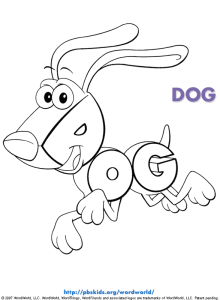Objective:
Students will be able to produce an “Eye-Ku” visual poem by using the Type Tools, Effects Menu, Appearance panel and Graphic Styles panel in Illustrator to create expressive text and images based on the Principles of Design.
Web Link:
Adobe Illustrator CS5 Tutorial 37 | Appearances & Graphic Styles: https://www.youtube.com/watch?v=yDtraLlf5rA
Topics Discussed:
- Typography
- Appearance Panel
- Graphic Styles Panel
- Effect Menu
- Warp Dialog
- Post-Modernism
- Expressive Text
Assignment:
Watch the “Adobe Illustrator CS5 Tutorial 37 | Appearances & Graphic Styles” tutorial video. Review the tutorial if necessary to refresh your memory on how to use the Appearance Panel, and how to save object appearances as Graphic Styles.
We have been using Illustrator’s unique tools to produce Expressive Text over the last couple of days. Today we are going to put what we have learned to good use by using Expressive Text to produce a visual poem: a poem that is enhanced by the graphics accompanying the words.
Visual Poetry and Concrete Poetry
- Concrete poetry is a type of poetry where the way the words look, and the arrangement of the words is more important in expressing the meaning of the poem than the words themselves.
- Visual poetry builds on this concept, adding background visuals and colors into the mix, producing an even more unique style.
- Open your Text Week document in Illustrator and go to the fourth (lower right) artboard.
- Take a look at the following examples explaining Visual and Concrete Poetry:
- How to Make a Visual Poem – Getty Museum
- A Further Note on Concrete Haiku on Haigaonline.com
- “Life Cycles” Gallery on Haigaonline.com
- Visual Poetry Festival on Behance.net
- Let Your Kids Fail – Kinetic Poem by Aimless Disquiet on YouTube
- concrete poetry – Google Image Search
- Visual Poetry – Pintrest search
- Think about the visual poetry examples:
- What features do visual poems have in common?
- What makes visual poetry different than regular poetry?
- Which of the examples do you like the best? Why?
- What makes a visual poem good?
- Use the pre-set Graphic Styles libraries, the Warp tools and the Type Tool to produce your concrete poem on the fourth artboard in Illustrator.
- You may use any style of poetry (free verse, haiku, music lyrics, Shakespearean sonnet, etc.).
- It is recommended that you use a short poem like a haiku, so the visuals are not overpowered by the words.
- You may create an original poem, or use your favorite poem or song lyric by another artist, so long as you include the name of the author in your design.
- Use a background image or color pattern that helps emphasize the theme of the poem. The poem does not necessarily have to describe the image, but they should share a common theme. You may borrow an image from the internet, so long as you credit the source, or you may create an original image (drawing or photograph).
- Your poem should visually represent, both in the arrangement of the words and in the visual style of the words, the theme of the poem.
- The theme of the poem should be obvious, based on the arrangement of the words and the Appearance or Graphic Style of the words. (Even someone who doesn’t speak English should be able to recognize what the poem is about.)
- There is no minimum or maximum length of the poem, but the poem must express a recognizable idea, and must effectively present the idea through the arrangement and graphic style of the words.
- Remember the Principles of Design as you lay out your page: Contrast, Repetition, Alignment and Proximity – use them, as well as what we have learned about Color Theory and Symbolism to maximize the visual appeal and meaning of your poem!
- The completed Visual Poem is due on Friday, March 6th. We will work on the poem and look at other examples of Visual Poetry in the days between now and then. You will turn in the completed visual poem along with the rest of your Type Week activities in this Illustrator document to the most recent post on our Google Classroom page.
- The completed Concrete Poems will be printed and displayed in the room for all to enjoy, so do your best to make this something unique and visually appealing!
Assigned: March 3rd, 2020
Teacher Pacing Due Date: March 6th, 2020


